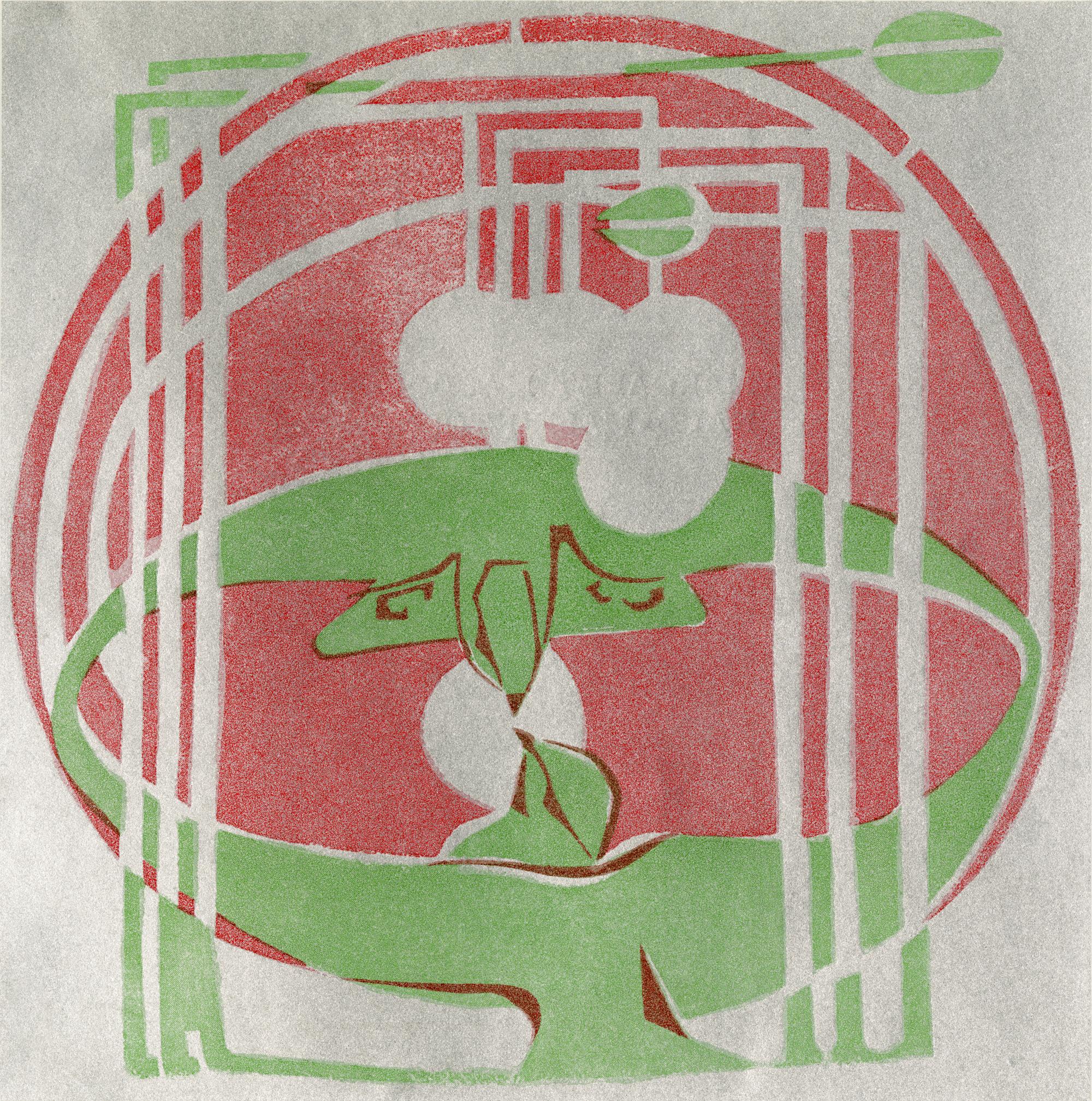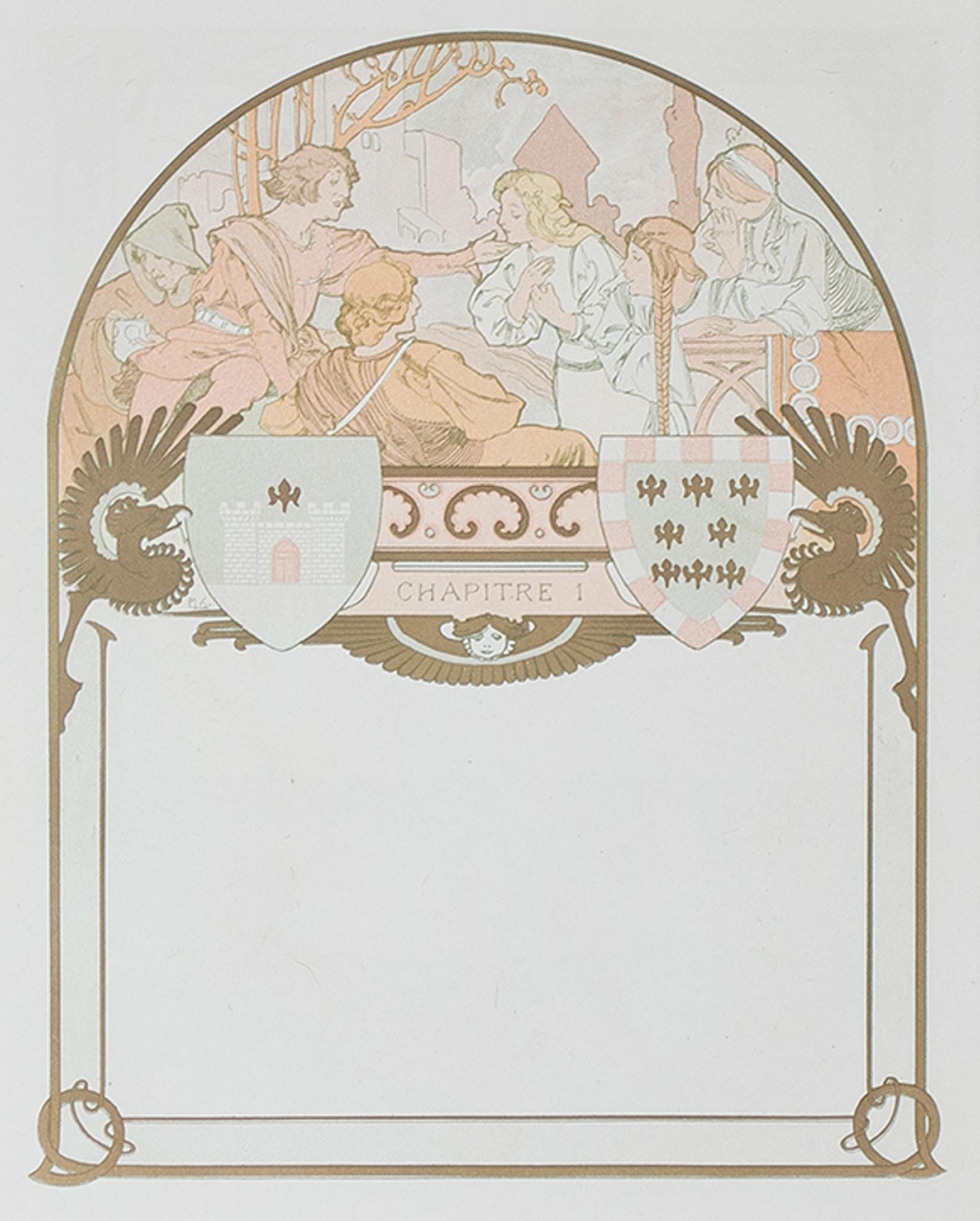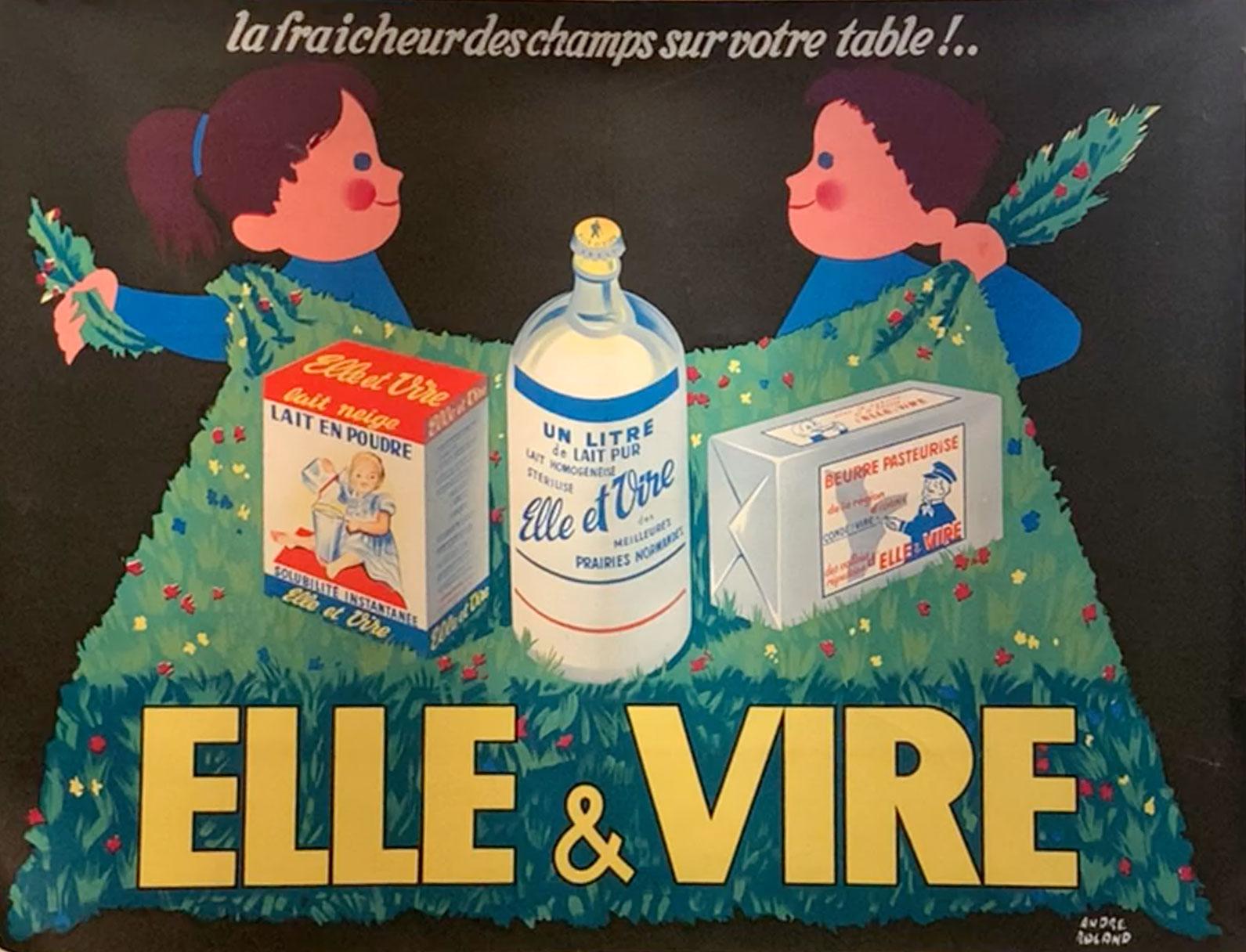Items Similar to Vintage 1971 Jewish Film Festival Poster Berkeley EM Lilien Art Nouveau Judaica
Want more images or videos?
Request additional images or videos from the seller
1 of 11
(after) Ephraim Moshe LilienVintage 1971 Jewish Film Festival Poster Berkeley EM Lilien Art Nouveau Judaica1971
1971
About the Item
This is printed on heavy art paper. it is a lithograph or silkscreen print done after a drawing by Ephraim Moshe Lilien. Great vintage judaic art from Berkeley California in the 1970's.
Ephraim Moses Lilien (Hebrew: אפרים משה ליליין; 23 May 1874 – 18 July 1925) was an art nouveau illustrator and printmaker particularly noted for his art on Jewish themes. He is sometimes called the "first Zionist artist."
Ephraim Moses Lilien (Maurycy Lilien) was born in 1874, in Drohobycz, Galicia, then in the Austro-Hungarian Empire. In 1889-1893 Lilien learned painting and graphic techniques at the Academy of Arts in Kraków. He studied under Polish painter Jan Matejko from 1890 to 1892.
As a member of the Zionist Movement, Lilien traveled to Ottoman Palestine several times between 1906 and 1918.
Lilien attended the Fifth Zionist Congress, held in Basel, as a member of the Democratic Fraction, an opposition group that supported the development of secular national culture. In 1905, at the Seventh Zionist Congress, in Basel, he, along with Boris Schatz, became a member of a committee formed to help establish the Bezalel Art School. As part of that work he accompanied Schatz to Jerusalem. Lilien was one of the two artists to accompany Boris Schatz to what is now Israel in 1906 for the purpose of establishing Bezalel Academy of Arts and Design, and taught the school's first class in 1906. Although his stay in the country was short-lived, he left his indelible stamp on the creation of an Eretz Israel style, placing biblical subjects in the Zionist context and oriental settings, conceived in an idealized Western design. In the first two decades of the century, Lilien's work served as a model for the Bezalel group. Lilien is known for his famous photographic portrait of Theodor Herzl. He often used Herzl as a model, considering his features a perfect representation of the "New Jew." In 1896, he received an award for photography from the avant garde magazine Jugend. Lilien illustrated several books. In 1923, an exhibition of his work opened in New York.
Lilien's illustrated books include Juda (1900), Biblically-themes poetry by Lilien's Christian friend, Börries Freiherr von Münchhausen, and Lieder des Ghetto (Songs of the Ghetto) (1903), Yiddish poems by Morris Rosenfeld translated into German. Present in the works of art: tradition, religion, family and community, are recurring motifs in the works of selected 37 painters and graphic artists from around the world. These works describe everyday and festive rituals, professions, religious and social life, but also studies of the figures of rabbis, scholars, craftsmen and ordinary inhabitants of small towns. They allow with a great deal of diversity to look into the depths of the world that existed for centuries and was destroyed during the World War.
The exhibition, apart from independent painting works, graphics and drawings, also shows prints. One of the most original forms of expression of Jewish painters and graphic artists in the early twentieth century was a book and press illustration in Yiddish and Hebrew publishing houses (and their translations into German and French). Especially noteworthy are the achievements of Lilien in Vienna, Józef Budka, Herman Struck and Jakob Steinhardt in Berlin and Marc Chagall in Paris.
ARTISTS Jankel Adler, Benn, Boris Deutsch, Feliks Fabian (Goldberg), David Garfinkiel (Gerfinkiel)
Todros Geller, Henryk (Enoch) Glicenstein, Chaim Goldberg, Chaim Gross, Arthur Kolnik, Ilya Schor,
Dora Szampanier (Shampanier), Samuel Wodnicki, Fiszel Zylberberg (Zber), Jakub Jacques Zucker
and Frank Meisler.
Lilien died in Badenweiler, Germany in 1925. A street in the Nayot neighborhood of Jerusalem is named for him.
- Creator:(after) Ephraim Moshe Lilien (1874 - 1925)
- Creation Year:1971
- Dimensions:Height: 30.2 in (76.71 cm)Width: 22.5 in (57.15 cm)
- Medium:
- Movement & Style:
- Period:
- Condition:edges worn with toning. Please see photos.
- Gallery Location:Surfside, FL
- Reference Number:1stDibs: LU3826118412
About the Seller
4.9
Platinum Seller
These expertly vetted sellers are 1stDibs' most experienced sellers and are rated highest by our customers.
Established in 1995
1stDibs seller since 2014
1,565 sales on 1stDibs
Typical response time: 1 hour
- ShippingRetrieving quote...Ships From: Surfside, FL
- Return PolicyA return for this item may be initiated within 3 days of delivery.
More From This SellerView All
- Mod Abstract Expressionist Modernist Lithograph Edward Avedisian Color Field ArtBy Edward AvedisianLocated in Surfside, FLEdward Avedisian (1936-2007) Cleo, Fur Queen, 1969 Lithograph in color on Arches wove paper. Hand signed, dated and numbered in pencil. Edition 100 Dimensions: 22.25 inches X 30.25...Category
1960s Abstract Expressionist Abstract Prints
MaterialsLithograph
- Agam Silkscreen Mod Judaica Lithograph Hand Signed Israeli Kinetic Op Art PrintBy Yaacov AgamLocated in Surfside, FLYaacov Agam Israeli (b. 1928) Hand signed, not individually numbered but from edition of 180. I can include a copy of the title sheet with the edition size and his signature if you request. sheet: 13.5 X 13.5 inches Some of these works have beautiful Hebrew calligraphy and mod imagery, animals, children and such that are not usually found in his work. This is a masterpiece of bold, graphic, mod design. Along with Reuven Rubin and Menashe Kadishman he is among Israel's best known artists internationally. Biographical info: The son of a rabbi, Yaacov Agam can trace his ancestry back six generations to the founder of the Chabad movement in Judaism. in 1946, he entered the Bezalel Academy of Arts and Design in Jerusalem. Studying with Mordecai Ardon, a former student at the Weimar Bauhaus. Yaakov Agam has been associated h with “abstract” artists, “hard edge” artists, and artists such as Josef Albers and Max Bill. Others find in Agam’s work an indebtedness to the masters of the Bauhaus. Agam’s approach to art, being conceptual in nature, has been likened to Marcel Duchamp’s, who expressed the need to put art “at the service of the spirit.” And, because of Agam’s employment of color and motion in his art, he has been compared to Alexander Calder, the artist who put sculpture into motion. (Motion is not an end, but a means for Agam. Calder’s mobiles are structures that are fixed, revolving at the whim of the wind. In a work by Agam, the viewer must intervene.) Agam has also been classified as an “op art” artist because he excels in playing with our visual sensitivities. Agam went to Zurich to study with Johannes Itten at the Kunstgewerbeschule. There, he met Frank Lloyd Wright and Siegfried Giedion, whose ideas on the element of time in art and architecture impressed him. In 1955, Galerie Denise René hosted a major group exhibition in connection with Vasarely's painting experiments with movement. in addition to art by Vasarely, it included works by Yaacov Agam, Pol Bury, Soto and Jean Tinguely, among others. Most Americans were first introduced to Vasarely by the groundbreaking exhibition, "The Responsive Eye," at New York's Museum of Modern Art in 1965. Josef Albers, Richard Anuszkiewicz. The show confirmed Vasarely's international reputation as the father of Op art. Agam has sought to express his ideas in a non-static form of art. In his abstract Kinetic works, which range from paintings and graphics to sculptural installations and building facades. Agam continually seeks to explore new possibilities in form and color and to involve the viewer in all aspects of the artistic process. Thus, for the past 40 years, Yaacov Agam’s pioneering ideas have impacted developments in art, (painting, monoprint, lithograph and agamograph) architecture, theatre, and public sculpture. Reflecting both his Israeli Jewish...Category
1980s Op Art Abstract Prints
MaterialsLithograph, Screen
- Agam Silkscreen Jerusalem Lithograph Hand Signed Israeli Kinetic Op Art PrintBy Yaacov AgamLocated in Surfside, FLYaacov Agam, Israeli (b. 1928) Hand signed, not individually numbered but from edition of 180. I can include a copy of the title sheet with the edition size and his signature if you ...Category
1980s Op Art Abstract Prints
MaterialsLithograph, Screen
- Large Archival Pigment Print Judaica Lithograph Mark Podwal Jewish Hebrew ArtBy Mark PodwalLocated in Surfside, FLMark Podwal (American, New York, born 1945) "All This Has Come Upon Us" Archival pigment print Dimensions: 22 X 30 inches with a Torah pointer, feather quill and spice box crown or...Category
21st Century and Contemporary Neo-Expressionist Figurative Prints
MaterialsLithograph, Archival Pigment
- Large Archival Pigment Print Judaica Lithograph Mark Podwal Jewish Hebrew ArtBy Mark PodwalLocated in Surfside, FLMark Podwal (American, New York, born 1945) "All This Has Come Upon Us" Archival pigment print Dimensions: 22 X 30 inches Temple Menora and Hanukkah Chanukah Menorah From a 2014 ...Category
21st Century and Contemporary Neo-Expressionist Figurative Prints
MaterialsLithograph, Archival Pigment
- Agam Silkscreen Mod Judaica Lithograph Hand Signed Israeli Kinetic Op Art PrintBy Yaacov AgamLocated in Surfside, FLYaacov Agam Israeli (b. 1928) Hand signed, not individually numbered but from edition of 180. I can include a copy of the title sheet with the edition size and his signature if you request. sheet: 13.5 X 13.5 inches Some of these works have beautiful Hebrew calligraphy and mod imagery, animals and such that are not usually found in his work. This is a masterpiece of bold, graphic, mod design. Along with Reuven Rubin and Menashe Kadishman he is among Israel's best known artists internationally. Biographical info: The son of a rabbi, Yaacov Agam can trace his ancestry back six generations to the founder of the Chabad movement in Judaism. in 1946, he entered the Bezalel Academy of Arts and Design in Jerusalem. Studying with Mordecai Ardon, a former student at the Weimar Bauhaus. Yaakov Agam has been associated h with “abstract” artists, “hard edge” artists, and artists such as Josef Albers and Max Bill. Others find in Agam’s work an indebtedness to the masters of the Bauhaus. Agam’s approach to art, being conceptual in nature, has been likened to Marcel Duchamp’s, who expressed the need to put art “at the service of the spirit.” And, because of Agam’s employment of color and motion in his art, he has been compared to Alexander Calder, the artist who put sculpture into motion. (Motion is not an end, but a means for Agam. Calder’s mobiles are structures that are fixed, revolving at the whim of the wind. In a work by Agam, the viewer must intervene.) Agam has also been classified as an “op art” artist because he excels in playing with our visual sensitivities. Agam went to Zurich to study with Johannes Itten at the Kunstgewerbeschule. There, he met Frank Lloyd Wright and Siegfried Giedion, whose ideas on the element of time in art and architecture impressed him. In 1955, Galerie Denise René hosted a major group exhibition in connection with Vasarely's painting experiments with movement. in addition to art by Vasarely, it included works by Yaacov Agam, Pol Bury, Soto and Jean Tinguely, among others. Most Americans were first introduced to Vasarely by the groundbreaking exhibition, "The Responsive Eye," at New York's Museum of Modern Art in 1965. Josef Albers, Richard Anuszkiewicz. The show confirmed Vasarely's international reputation as the father of Op art. Agam has sought to express his ideas in a non-static form of art. In his abstract Kinetic works, which range from paintings and graphics to sculptural installations and building facades. Agam continually seeks to explore new possibilities in form and color and to involve the viewer in all aspects of the artistic process. Thus, for the past 40 years, Yaacov Agam’s pioneering ideas have impacted developments in art, (painting, monoprint, lithograph and agamograph) architecture, theatre, and public sculpture. Reflecting both his Israeli Jewish...Category
1980s Op Art Abstract Prints
MaterialsLithograph, Screen
You May Also Like
- Art Nouveau "Pair of Doves" original lithograph by Charles Rennie MackintoshLocated in Chicago, ILCharles Rennie Mackintosh was a Scottish architect, designer, and visual artist. His artistic approach had much in common with European Symbolism. His work, alongside that of his wif...Category
Early 1900s Art Nouveau More Prints
MaterialsLithograph
- Original "The StarBoarder, Imitations of Sousa" vintage art nouveau posterLocated in Spokane, WAOriginal 1890s Charles H. Boyle "The Star Boarder" Vintage Sousa Antique Advertising Poster. Original stone lithograph, linen backed very good condition. PRINTED BY: The Enquirer...Category
1890s Art Nouveau Portrait Prints
MaterialsLithograph
- Late 19th century color lithograph art nouveau ornate bookplate medievalBy Alphonse MuchaLocated in Milwaukee, WIThis color double-sided lithograph is from Alphonse Mucha's "Ilsee, Princess of Tripoli." The front of this piece, "Rudel of Blaye" features the royal family and subjects (sans text)...Category
1890s Art Nouveau Figurative Prints
MaterialsLithograph
- Original Antique French Poster, "Pneu Continental", Mich Michel Liebeaux, LithoBy Michel LiebeauxLocated in Dallas, TX"Continental" artist: Mich, (Michel Liebeaux) 1881 - 1923 Size: 61 x 86. Year: 1907. Archival linen backed in ok condition; ready to frame. Original linen backed stone lithograph: Mi...Category
Early 1900s Art Nouveau More Prints
MaterialsLithograph
- Original Antique French Poster, "Elle and Vire", Andre Roland, LithographBy Andre Roland 2Located in Dallas, TX"Elle & Vire The Freshness of the Fields on your table!" artist: Andre Roland. Size: 56 x 76. Year: 1960. Archival linen backed in decent condition; ready...Category
1960s Art Nouveau More Prints
MaterialsLithograph
- Original Antique French Poster, "Hunting w Hounds", Albert Guillaume, LithographBy Albert GuillaumeLocated in Dallas, TXartist: Albert Guillaume Size: 26 x 103. Year: 1900's. Archival linen backed in great condition; ready to frame. The posters of the artist Albert André Guillaume are still today tr...Category
Early 1900s Art Nouveau More Prints
MaterialsLithograph
Recently Viewed
View AllMore Ways To Browse
Art Nouveau Original Art
German Art Nouveau Art
Art Nouveau Poster Art
German Art Nouveau Style
French Art Nouveau Posters
Art Nouveau Poster Art Of France
Art Nouveau 1970s
Hungarian Art Nouveau
Hungary Poster
Dior Art Nouveau
Mayer Art Nouveau
Art Nouveau Vintage Posters
Vintage Art Nouveau Posters
Hungarian Vintage Poster
Vienna Art Nouveau
Vintage Film Posters
Judaica Art
Art Nouveau French Painting





